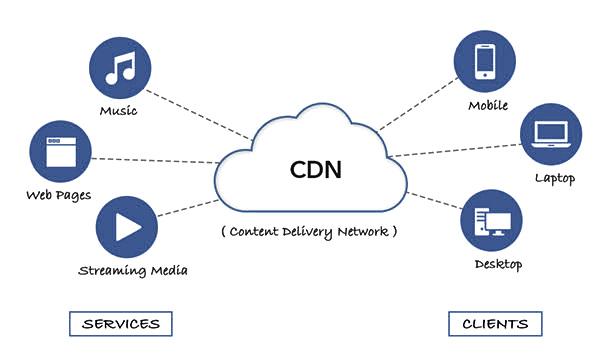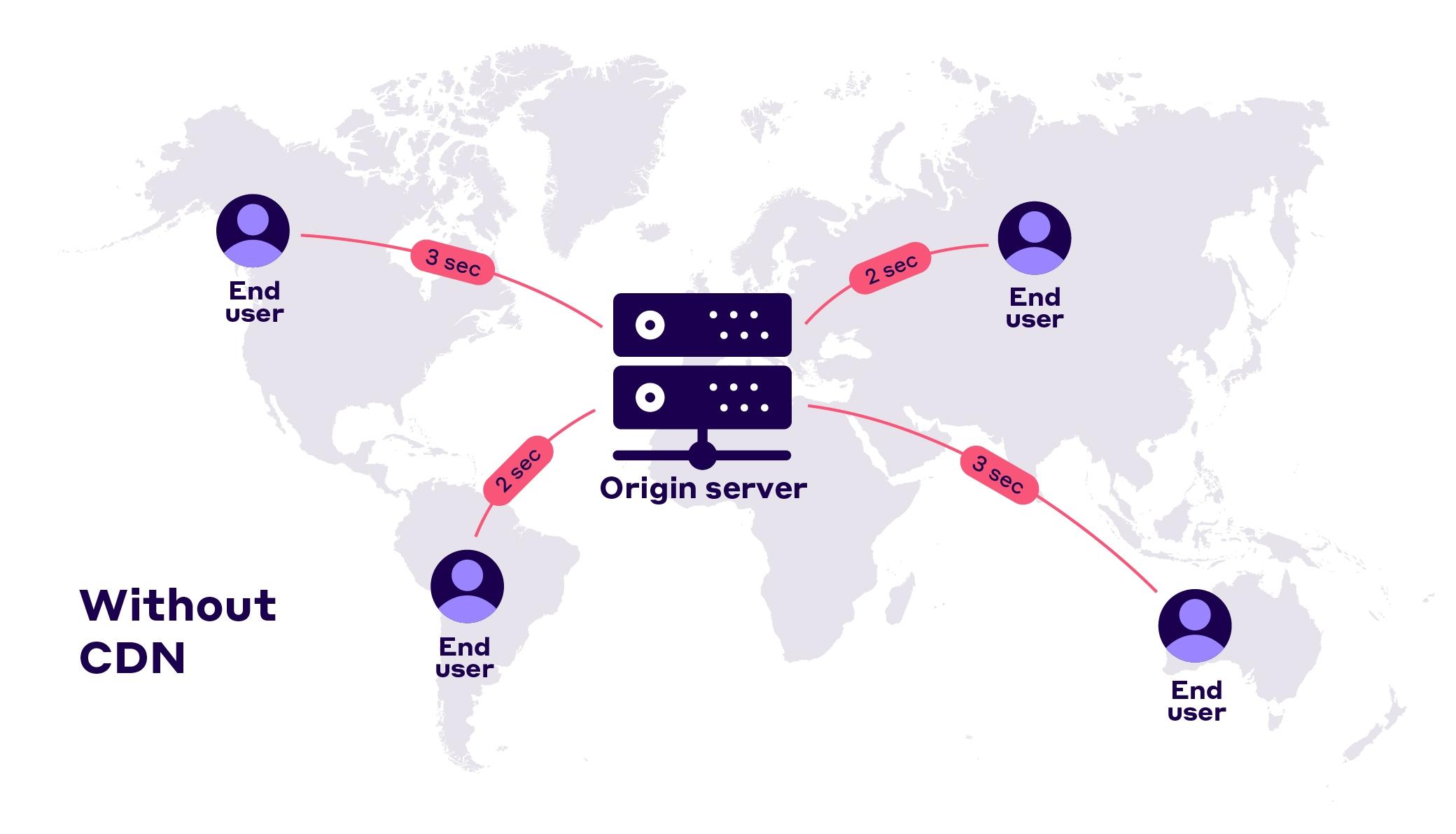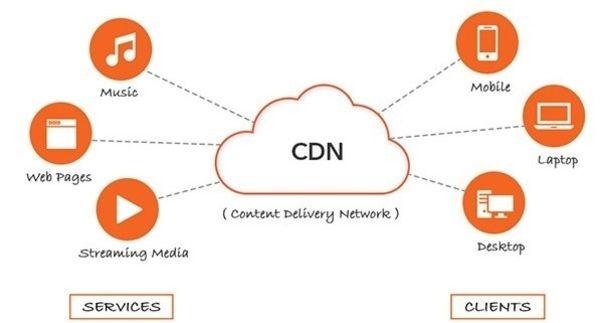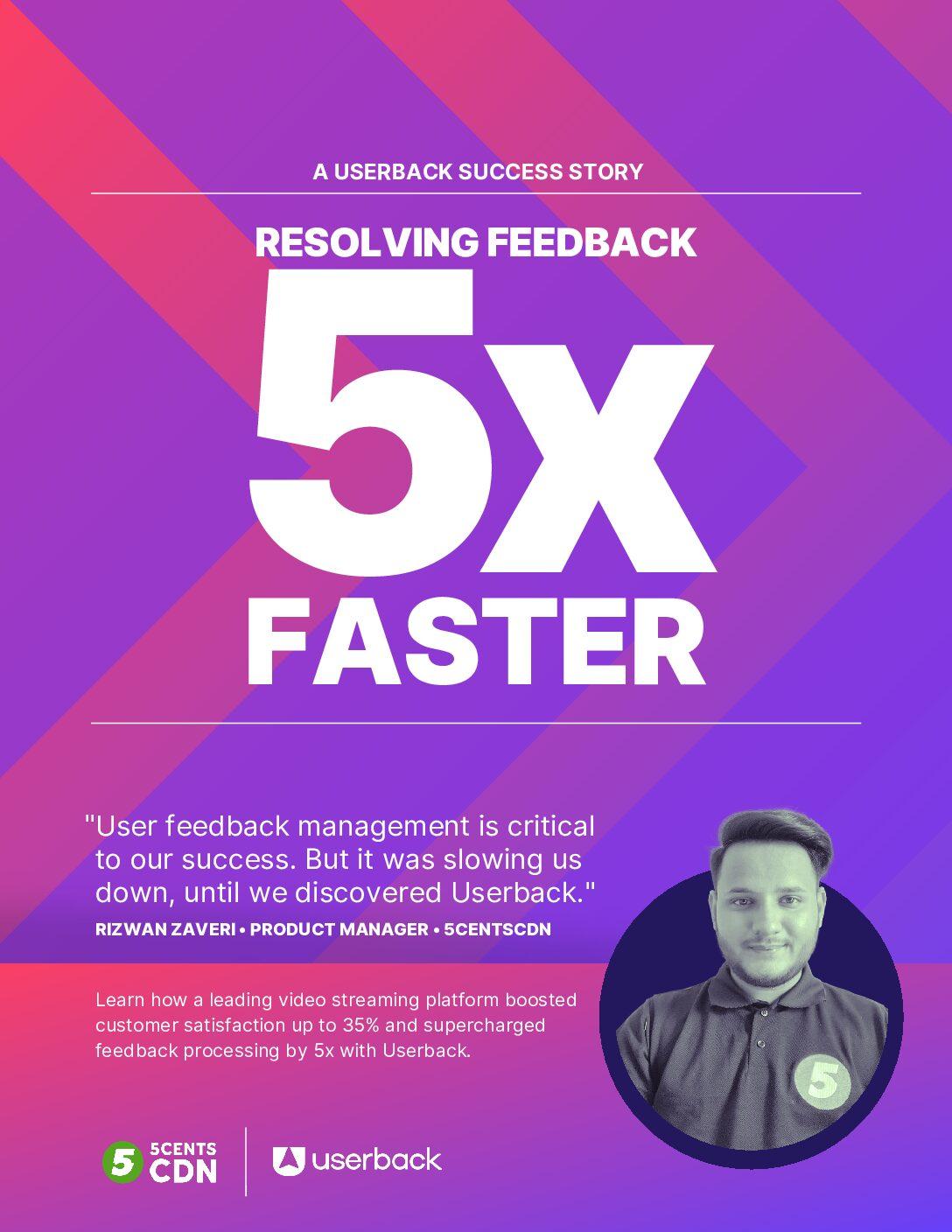Are you tired of slow-loading websites? A Content Delivery Network (CDN) could be your game changer! Boost site speed, enhance security, and improve user experience. Discover the top 10 benefits of using a CDN and watch your online presence thrive!
Do You Need a CDN? (Top 10 CDN Benefits Explained)
In today’s fast-paced digital world, where every millisecond counts, ensuring your website runs smoothly and delivers content quickly is more crucial than ever. If you’ve ever found yourself frustrated by slow-loading pages or buffering videos, you’re not alone! Many businesses are turning to Content Delivery Networks, or CDNs, to enhance their online presence and provide a seamless experience for their users. But is a CDN really necessary for your website? In this article, we’ll explore the top 10 benefits of using a CDN, breaking down how it can transform your site’s performance, boost security, and even improve your SEO rankings. Whether you’re a small startup or a booming enterprise, understanding the advantages of a CDN could be the key to unlocking your website’s full potential. So, let’s dive in and see if a CDN is the missing piece in your digital strategy!
Understanding What a CDN Is and How It Works
Content Delivery Networks, or CDNs, are a key component in the digital landscape, designed to enhance the delivery of web content. Imagine a network of servers strategically located across various geographical locations, working in unison to store and deliver web pages, images, videos, and other types of content. This network ensures that users access the data from the closest server, minimizing latency and improving load times. It’s like having a local library stocked with the books you love, rather than waiting for them to arrive from a distant city.
At its core, a CDN operates on the principle of caching. When a user visits a website, the CDN temporarily stores a copy of the content on its servers. The next time someone requests that same content, the CDN delivers it directly from the nearest server. This dramatically reduces the distance data must travel and, as a result, enhances the speed at which the content is served. This is particularly beneficial for websites with a global audience, where users are dispersed across different regions.
In addition to speeding up content delivery, CDNs also offer several other distinct advantages:
- Improved Reliability: By distributing content across multiple servers, CDNs reduce the risk of downtime.
- Scalability: During traffic spikes, CDNs can handle increased loads seamlessly, ensuring consistent performance.
- Enhanced Security: CDNs often provide additional layers of security, such as DDoS protection and secure token authentication.
- SEO Benefits: Faster load times can improve your site’s search engine rankings, driving more organic traffic.
Let’s take a closer look at how a CDN can work for your website:
| Feature | Traditional Hosting | CDN |
|---|---|---|
| Load Time | Higher latency due to distant servers | Low latency with local servers |
| Downtime | Higher chance of failure | Multi-server redundancy |
| Traffic Management | Single point of failure | Balanced load across servers |
Moreover, with the rise of mobile browsing and video streaming, the demand for fast and reliable content delivery has never been higher. CDNs are equipped to handle these challenges by employing advanced technologies such as HTTP/2, which improves loading speed, and TLS/SSL, which enhances security. By leveraging these technologies, CDNs can ensure that your content is not only delivered swiftly but also securely.
Choosing the right CDN for your needs can significantly impact your website’s performance, user experience, and overall success. With benefits ranging from speed optimization to enhanced security features, understanding how a CDN functions can empower you to make informed decisions about your web infrastructure.
Boosting Your Website Speed and Performance with a CDN
When it comes to optimizing your website’s speed and performance, a Content Delivery Network (CDN) can be a game changer. By distributing your content across multiple servers around the globe, a CDN ensures that your website visitors receive data from the closest server. This reduces latency and significantly enhances the loading time of your web pages.
Using a CDN not only speeds up your site, but it also improves overall user experience. Quick-loading websites keep visitors engaged, leading to lower bounce rates and higher conversion rates. In fact, studies show that even a one-second delay in page load time can lead to a significant drop in user satisfaction. Here’s how a CDN can help:
- Faster Content Delivery: Access to edge servers minimizes the distance data travels, leading to faster load times.
- Reduced Server Load: By offloading traffic to other servers, your main server is less likely to be overwhelmed, especially during traffic spikes.
- Improved Scalability: A CDN can handle large amounts of traffic efficiently, allowing your website to grow without compromising performance.
- Enhanced Security: Many CDNs offer security features, such as DDoS protection, helping to keep your website safe from malicious attacks.
Moreover, a CDN can play a crucial role in search engine optimization (SEO). Search engines like Google consider website speed as a ranking factor. A faster site leads to better rankings, which can translate into increased visibility and traffic. Here’s a simple comparison of websites with and without a CDN:
| Feature | Without CDN | With CDN |
|---|---|---|
| Average Load Time | 3-5 seconds | 1-2 seconds |
| User Engagement | High Bounce Rate | Lower Bounce Rate |
| SEO Performance | Lower Rankings | Higher Rankings |
investing in a CDN can provide substantial long-term benefits for your website. With its ability to enhance speed, improve user experience, and boost your SEO, a CDN is not just a luxury but a necessity for any serious online business. Give your website the performance upgrade it deserves and watch as your traffic and conversions soar!
Enhancing User Experience Across Different Devices
In today’s digital landscape, ensuring a seamless user experience across a variety of devices is paramount. With users accessing content from smartphones, tablets, laptops, and desktops, the demand for consistency and speed has never been higher. This is where a Content Delivery Network (CDN) comes into play, offering a vital solution to enhance user engagement and satisfaction.
By distributing your content across multiple servers strategically located around the globe, a CDN minimizes the distance data must travel, resulting in faster load times. Speed is crucial; studies show that even a one-second delay can lead to significant drops in user satisfaction and conversions. When it comes to mobile users, who often experience slower connections, a CDN ensures that content is delivered quickly and efficiently.
Moreover, a CDN can adapt content to various screen sizes and formats, making it easier for users to access your website or application, regardless of the device they are using. Responsive design is essential, and a CDN helps facilitate this by automatically serving optimized images and assets that match the user’s device specifications.
Another critical aspect is reliability. A CDN can handle unexpected traffic spikes, ensuring that your site remains accessible even during peak times. This is particularly important for e-commerce sites during sales or events, where downtime can lead to significant revenue loss. With a CDN, users are more likely to have a smooth and uninterrupted experience, encouraging them to return.
Here are a few additional benefits that contribute to an enhanced user experience:
- Global Reach: With servers located worldwide, content is delivered from the nearest node to the user, reducing latency.
- Improved Security: CDNs often come with built-in security features, protecting user data and enhancing trust.
- Scalability: As your audience grows, a CDN allows for easy scaling without compromising performance.
To illustrate the impact of a CDN, consider the following comparison of load times across different devices with and without a CDN:
| Device Type | Load Time (Without CDN) | Load Time (With CDN) |
|---|---|---|
| Smartphone | 3.5 seconds | 1.2 seconds |
| Tablet | 2.8 seconds | 0.9 seconds |
| Desktop | 4.0 seconds | 1.5 seconds |
As demonstrated, the load times significantly improve with a CDN in place, directly influencing user satisfaction and retention. In a world where user expectations are higher than ever, leveraging a CDN is not just beneficial—it’s essential.

Improving Website Security and Mitigating Risks
As cyber threats continue to evolve, ensuring your website’s security has never been more crucial. Utilizing a Content Delivery Network (CDN) can significantly enhance your website’s defenses against various risks. A CDN acts as an additional layer of security, safeguarding your website from malicious attacks and unauthorized access.
One of the primary benefits of a CDN is its ability to absorb and mitigate Distributed Denial of Service (DDoS) attacks. These attacks can overwhelm your server by flooding it with traffic, rendering your site inaccessible. With a CDN, your site’s traffic is distributed across multiple servers, making it challenging for attackers to target any single point effectively. This results in:
- Increased uptime: Even during an attack, users can still access your website.
- Improved response time: Traffic is managed efficiently, keeping your site fast and responsive.
Additionally, many CDNs offer built-in security features such as Web Application Firewalls (WAFs) that help filter out malicious requests before they reach your site. This proactive approach can protect against SQL injection, cross-site scripting, and other common vulnerabilities. By employing a CDN, you are not just enhancing speed; you’re also greatly improving your site’s security posture.
Moreover, a CDN can facilitate secure connections through SSL (Secure Socket Layer) encryption. This ensures that data transferred between your website and your users is encrypted, safeguarding sensitive information such as login credentials and payment details. The benefits here include:
- Trust and credibility: A secure site boosts user confidence, leading to higher conversion rates.
- SEO advantages: Search engines favor secure sites, potentially improving your rankings.
Another aspect worth considering is the geographical distribution of CDN servers. By having multiple servers worldwide, a CDN reduces the risk of data loss and provides a more resilient infrastructure. In the event of a server failure, the CDN can reroute traffic to the nearest available server, ensuring that your site remains online and accessible.
the integration of a CDN into your website not only improves performance but plays a vital role in enhancing security and mitigating risks. By investing in a CDN, you are proactively protecting your online presence, ensuring that your users have a safe and reliable experience.

Scaling Your Business Effortlessly with CDN Solutions
When it comes to scaling your business, having the right infrastructure in place is crucial. One of the most effective ways to ensure your website can handle increasing traffic seamlessly is by utilizing a Content Delivery Network (CDN). By distributing your content across multiple servers around the globe, CDNs help reduce latency, improve load times, and enhance the overall user experience.
Imagine a scenario where a potential customer visits your site. With a CDN, that visitor connects to the nearest server, which means that your website loads faster, regardless of their location. This not only keeps your audience engaged but also significantly improves conversion rates. After all, a delay of just a few seconds can lead to lost sales opportunities.
Moreover, CDN solutions provide additional benefits that can boost your business’s scalability:
- Improved Reliability: CDNs offer redundancy, which ensures that your site remains operational even if one server goes down.
- Enhanced Security: Many CDN providers come with built-in DDoS protection and web application firewalls to safeguard your site against cyber threats.
- Cost Efficiency: By offloading traffic from your main servers, CDNs can help you save on bandwidth costs and reduce the need for expensive server upgrades.
As your business grows, so do the demands on your website. A CDN can effortlessly accommodate spikes in traffic, such as those experienced during promotional campaigns or product launches. This scalability means you can focus on your core business activities without worrying about infrastructure constraints.
| CDN Benefits | Impact on Business |
|---|---|
| Faster Load Times | Increased user satisfaction and engagement |
| Global Reach | Access to a wider audience |
| Reduced Downtime | Higher reliability and trust |
In the competitive online landscape, having a CDN is not just a luxury; it’s a necessity. With its ability to enhance performance and security while streamlining costs, a CDN solution empowers businesses to scale effortlessly. As you plan for growth, consider the pivotal role that a CDN can play in ensuring that your website remains responsive, secure, and ready to meet the demands of your customers.

Cost-Effectiveness of Using a CDN for Your Online Presence
When considering the cost-effectiveness of implementing a Content Delivery Network (CDN), it’s essential to evaluate the long-term benefits against the initial investment. While the up-front cost of a CDN might seem daunting, the return on investment can be significant. Here’s why it’s worth it:
- Improved Load Times: Faster website loading times lead to better user experiences, which can significantly reduce bounce rates and increase conversions. Every second counts!
- Scalability: CDNs can handle traffic spikes without additional infrastructure costs, ensuring your website remains performant during peak times.
- Reduced Bandwidth Costs: By caching content closer to users, CDNs can minimize the amount of data that needs to be transferred from your origin server, effectively lowering bandwidth expenses.
- Enhanced Security: Many CDN providers offer security features like DDoS protection, which can save you money on potential downtime and data breaches.
- Increased Global Reach: For businesses targeting a global audience, a CDN ensures that users from different regions experience similar fast load times, broadening your market reach.
When evaluating the financial impact, consider the following simplified breakdown:
| Cost Factor | Without CDN | With CDN |
|---|---|---|
| Bandwidth Costs | High | Reduced |
| Downtime Losses | Significant | Minimized |
| User Retention | Lower | Higher |
| Maintenance Costs | Higher | Lower |
In addition to the direct savings, think about the indirect financial benefits. A well-performing site enhances your brand’s reputation, leading to increased traffic and higher search engine rankings. This organic growth can translate into substantial revenue over time.
Ultimately, the cost-effectiveness of a CDN transcends mere numbers. It’s about investing in the overall health and longevity of your online presence. By prioritizing performance and user experience, you’re not just saving money; you’re paving the way for future success.
Leveraging CDN for Better SEO and Search Rankings
When it comes to improving your website’s SEO and search rankings, leveraging a Content Delivery Network (CDN) can work wonders. A CDN enhances your site’s performance by distributing content across a global network of servers, ensuring that users receive data from the nearest location. This not only speeds up loading times but also positively influences search engine algorithms that prioritize user experience.
Here are some ways a CDN contributes to better SEO:
- Faster Load Times: Search engines like Google consider page load speed as a ranking factor. A CDN reduces latency and speeds up content delivery, which can lead to lower bounce rates and higher rankings.
- Improved Uptime: With a CDN, your website can handle traffic spikes without crashing. Search engines favor sites that are consistently available, and a CDN helps ensure your site remains online.
- Enhanced Security: CDNs provide additional layers of security, such as DDoS protection and SSL encryption. A secure site is not only crucial for user trust but also a factor in SEO rankings.
- Geolocation Benefits: By caching your content closer to users, CDNs improve the experience for visitors from different geographical locations, which can lead to higher engagement rates. Search engines recognize this enhanced user experience.
Moreover, a CDN can assist with optimizing images and other media files. By automatically compressing and serving the right file sizes for different devices, a CDN ensures that your content looks great without hindering performance. This can also lead to:
| Media Optimization Benefits | SEO Impact |
|---|---|
| Reduced Image Loading Times | Lower bounce rates, improved user experience |
| Adaptive Streaming for Videos | Increased engagement and longer session durations |
Incorporating structured data is another important aspect of SEO, and a CDN can help with this as well. By delivering your structured data quickly and efficiently, search engines can better understand your content, leading to enhanced visibility in search results, including rich snippets.
with the rise of mobile usage, optimizing your site for mobile devices is essential. A CDN ensures that your website loads quickly across all devices, contributing to a positive mobile user experience. Since mobile-friendliness is a significant ranking factor, this can greatly influence your search engine visibility.

Customizing Content Delivery for Global Audiences
When it comes to reaching audiences around the globe, delivering content efficiently and effectively is crucial. A Content Delivery Network (CDN) can play an instrumental role in this process, ensuring that your website’s assets are served quickly, regardless of where your users are located. By strategically placing servers across various geographical locations, a CDN minimizes latency and enhances the user experience.
One of the primary advantages of a CDN is geographic load balancing. This means that users are directed to the nearest server, resulting in faster loading times. Imagine a visitor in Australia accessing your website that is hosted on a server in the U.S.—the distance can significantly slow down loading speeds. With a CDN, that same visitor would be routed to an Australian server, providing them with a smoother experience.
Moreover, a CDN supports adaptive streaming, which is especially beneficial for media-heavy websites. This technology adjusts the quality of video and audio content based on the user’s current internet speed. As a result, users enjoy uninterrupted streaming, whether they are on a high-speed connection or a more limited one. This flexibility not only keeps users engaged but also reduces the chances of bounce rates due to buffering issues.
In addition to speed and quality, CDNs also enhance security for global audiences. With built-in features like DDoS protection and secure token authentication, a CDN can help safeguard your content from malicious attacks. This is particularly important for international audiences who may be exposed to varying levels of online threats depending on their location.
| CDN Benefits | Impact on Global Audiences |
|---|---|
| Reduced Latency | Faster access for users worldwide |
| Increased Uptime | Reliable access during peak traffic |
| Enhanced Security | Protection against cyber threats |
| Media Optimization | Better streaming for diverse bandwidths |
a CDN enables content localization, which is vital for engaging diverse audiences. By delivering content that is tailored to specific regions—such as localized languages, currencies, and cultural nuances—you can create a more personal experience for users. This not only boosts user satisfaction but also fosters a sense of connection between your brand and its global audience.

Choosing the Right CDN Provider for Your Needs
When it comes to selecting a Content Delivery Network (CDN) provider, the choices can be overwhelming. The right CDN can significantly enhance your website’s performance, speed, and security, but not all providers are the same. Here’s a breakdown of key factors to consider when making your decision:
- Performance and Speed: Look for a CDN that boasts a robust infrastructure and a global network of servers. The proximity of these servers to your users can dramatically reduce latency.
- Scalability: Ensure that the provider can scale with your business. Whether you’re a startup or an established enterprise, your CDN should accommodate increasing traffic volumes without compromising performance.
- Security Features: Modern CDNs offer various security measures, such as DDoS protection, web application firewalls (WAF), and SSL certificates. These features are crucial to safeguarding your website from threats.
- Pricing Structure: Understanding the pricing model is vital. Some CDNs charge based on the amount of data transferred, while others have flat-rate plans. Analyze your usage patterns to find the most cost-effective option.
- Support and Documentation: A reliable CDN provider should offer excellent customer support and comprehensive documentation to assist you in troubleshooting and optimizing your CDN usage.
| CDN Provider | Key Features | Pricing Model |
|---|---|---|
| Cloudflare | Free SSL, DDoS protection, Global network | Free and paid plans |
| Akamai | Advanced security, CDN caching | Custom pricing |
| Amazon CloudFront | Pay-as-you-go, integration with AWS | Data transfer pricing |
In addition to these factors, consider the location of your primary audience. If your users are concentrated in a specific region, choose a CDN that has a strong presence there. Furthermore, review user testimonials and case studies to gauge the provider’s reputation and reliability.
don’t forget to take advantage of free trials or demo versions whenever available. Testing the CDN firsthand can give you invaluable insights into its performance and compatibility with your existing systems.

Real-Life Success Stories: How CDNs Transform Businesses
Frequently Asked Questions (FAQ)
Sure! Here’s a Q&A format for the article titled “Do You Need a CDN? (Top 10 CDN Benefits Explained)” that maintains a conversational and persuasive tone:
Q1: What exactly is a CDN?
A1: Great question! A CDN, or Content Delivery Network, is a network of servers distributed around the world. Its main job is to deliver your website’s content—like images, videos, and scripts—more quickly and efficiently to users, no matter where they are located. Think of it as having multiple post offices that can get your mail to people faster, rather than relying on just one!
Q2: Why should I consider using a CDN for my website?
A2: There are plenty of reasons! The most compelling benefit is speed. A CDN reduces the distance between your server and your visitors, which means faster loading times. In today’s fast-paced digital world, a split-second delay can lead to lost visitors. Plus, a CDN enhances security and can help manage traffic spikes. It’s like having a safety net for your website!
Q3: Can a CDN really improve my website’s performance?
A3: Absolutely! Studies show that websites using a CDN can load significantly faster—sometimes by seconds. Faster load times improve user experience and keep visitors engaged, which can lead to higher conversion rates. Imagine your site loading in the blink of an eye instead of a frustrating wait!
Q4: What are some specific benefits of using a CDN?
A4: Here are some top benefits:
- Faster Load Times: As we mentioned, CDNs reduce latency by serving content closer to the user.
- Improved Security: Many CDNs offer DDoS protection and web application firewalls.
- Scalability: They can handle sudden surges in traffic, perfect for sales or events.
- Reduced Bandwidth Costs: CDNs optimize and cache content, saving you on bandwidth.
- Better SEO: Page speed is a ranking factor, so faster sites can rank higher.
- Global Reach: CDNs have servers worldwide, ensuring smooth access for international users.
- Content Caching: Frequently accessed content is stored, speeding up delivery.
- Reliable Uptime: CDNs distribute loads, reducing the risk of server failure.
- Improved User Experience: Quick access leads to happier visitors!
- Enhanced Analytics: Many CDNs provide valuable insights about your traffic.
Q5: Is setting up a CDN complicated?
A5: Not at all! Most CDN providers offer user-friendly setups and integrations with popular platforms. You don’t need to be a tech wizard to get started. Plus, many services provide excellent customer support to guide you through the process.
Q6: Are there any downsides to using a CDN?
A6: While the benefits are compelling, there can be minor downsides, such as cost and potential complexity in initial setup. However, the investment typically pays off in terms of improved performance and security. Think of it as investing in a better experience for your users!
Q7: How do I know if a CDN is right for my business?
A7: If you value speed, security, and a seamless user experience, a CDN is definitely worth considering. Whether you have a blog, an e-commerce site, or a business site, implementing a CDN can enhance your online presence significantly. If you’re seeing slow load times or expecting a spike in traffic, it’s time to take the plunge!
Q8: Which CDN provider should I choose?
A8: There are numerous CDN providers, each with its unique features. Popular options include Cloudflare, Akamai, and Amazon CloudFront. It’s essential to assess your specific needs—like budget, performance, and customer support—before making a decision. Don’t hesitate to take advantage of free trials to find your perfect match!
Q9: How can I get started with a CDN today?
A9: Getting started is simple! Research and compare different CDN providers, then sign up for one that meets your needs. Most will guide you through the configuration process. Once you’re set up, sit back and watch your website’s performance soar!
Q10: Final thoughts—should I invest in a CDN?
A10: If you’re serious about providing the best experience for your users, then yes! A CDN isn’t just a nice-to-have; it’s increasingly becoming essential in our digital landscape. Faster load times, enhanced security, and improved reliability can give you a competitive edge. So why wait? Invest in a CDN today and watch your website thrive!
—
Feel free to adjust any of the responses to better fit your article’s style or message!
Future Outlook
if you’re still on the fence about whether a CDN is right for you, consider the multitude of benefits it offers. From faster loading times and improved site performance to enhanced security and better SEO, a Content Delivery Network could be the game-changer your website needs.
Imagine your visitors enjoying a seamless experience, no matter where they are in the world—sounds pretty appealing, right? With the digital landscape becoming increasingly competitive, leveraging a CDN isn’t just a nice-to-have; it’s becoming essential for businesses looking to thrive online.
So, why wait? Take the plunge and explore the options available to you. Whether you’re running a personal blog, an e-commerce site, or a large enterprise, there’s a CDN solution tailored to your needs. Your users will thank you, and you might just find that the benefits far outweigh the costs. Happy optimizing!





